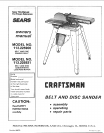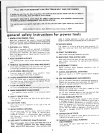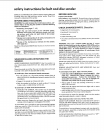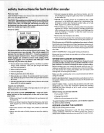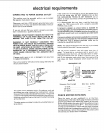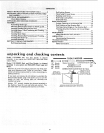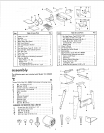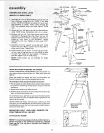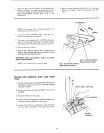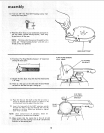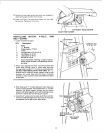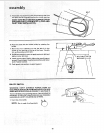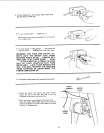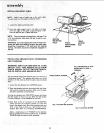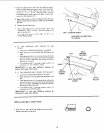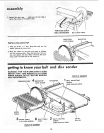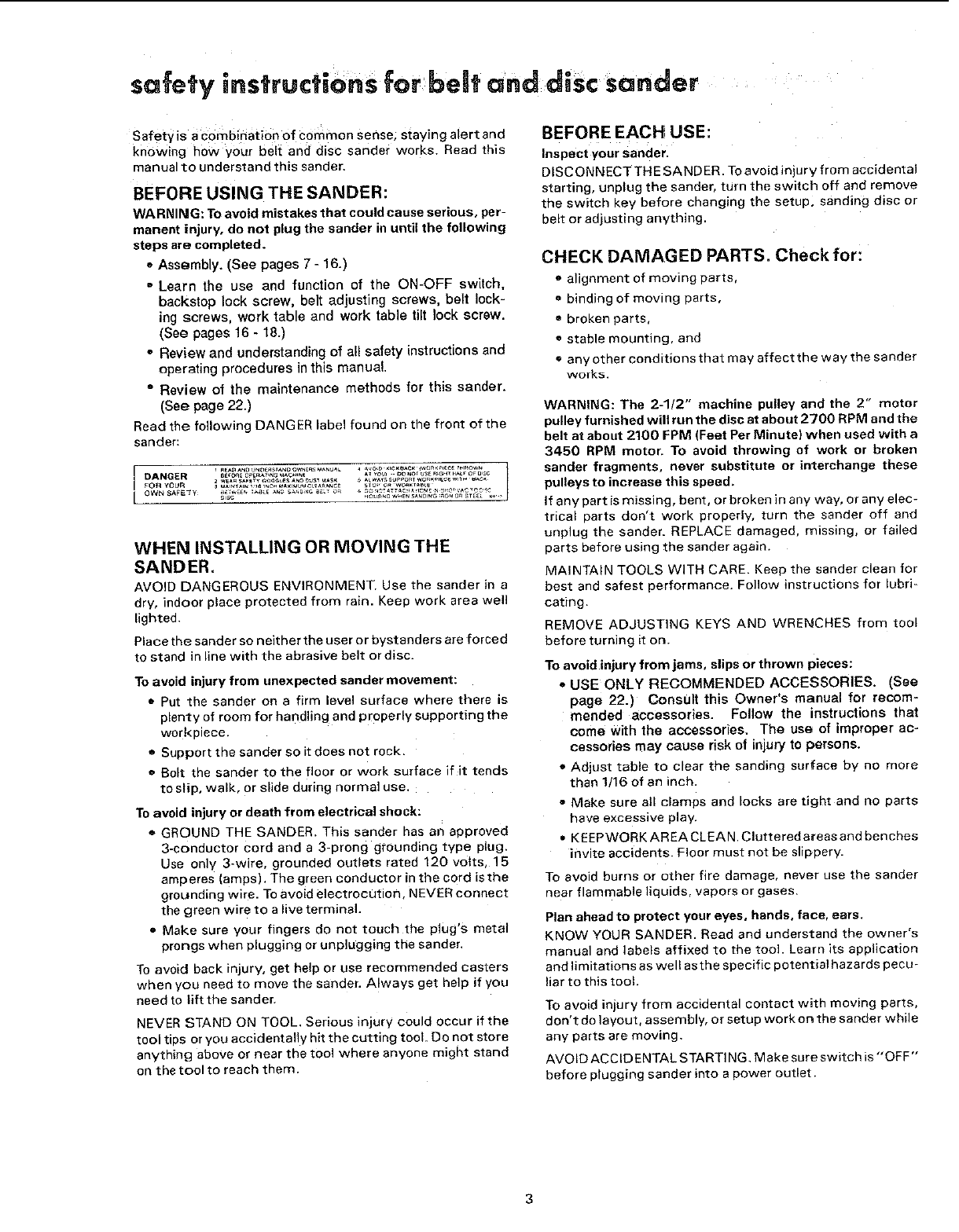
safety instructions for beJt and disc sander
Safety is a combination of common sense, staying alert and
knowing how your belt and disc sander works. Read this
manual to understand this sander.
BEFORE USING THE SANDER:
WARNING: To avoid mistakes that could cause serious, per-
manent injury, do not plug the sander in until the following
steps are completed.
o Assembly. (See pages 7 - 16.)
o Learn the use and function of the ON-OFF switch,
backstop lock screw, belt adjusting screws, belt lock-
ing screws, work table and work table tilt lock screw.
(See pages 16 - 18.)
o Review and understanding of all safety instructions and
operating procedures in this manual.
" Review of the maintenance methods for this sander.
(See page 22.)
Read the following DANGER label found on the front of the
sander:
WHEN INSTALLING OR MOVING THE
SANDER.
AVOID DANGEROUS ENVIRONMENT. Use the sander in a
dry, indoor place protected from rain. Keep work area well
lighted.
Place the sander so neither the user or bystanders are forced
to stand in line with the abrasive belt or disc.
To avoid injury from unexpected sander movement:
e Put the sander on a firm level surface where there is
plenty of room for handling and properly supporting the
workpiece.
Support the sander so it does not rock.
Bolt the sander to the floor or work surface if it tends
to slip, walk, or slide during normal use.
To avoid injury or death from electrical shock:
o GROUND THE SANDER. This sander has an approved
3-conductor cord and a 3-prong grounding type plug.
Use only 3-wire, grounded outlets rated 120 volts, 15
amperes (amps). The green conductor in the cord isthe
grounding wire. To avoid electrocution, NEVER connect
the green wire to a live terminal.
,, Make sure your fingers do not touch the plug's metal
prongs when plugging or unplugging the sander.
To avoid back injury, get help or use recommended casters
when you need to move the sander. Always get help if you
need to lift the sander.
NEVER STAND ON TOOL. Serious injury could occur if the
tool tips or you accidentally hit the cutting tool. Do not store
anything above or near the tool where anyone might stand
on the tool to reach them.
BEFORE EACH USE:
Inspect your sanderl
DISCONNECTTHE SANDER. To avoid injury from accidental
starting, unplug the sander, turn the switch off and remove
the switch key before changing the setup, sanding disc or
belt or adjusting anything.
CHECK DAMAGED PARTS. Check for:
,, alignment of moving parts,
,, binding of moving parts,
= broken parts,
• stable mounting, and
o any other conditions that may affect the way the sander
works.
WARNING: The 2-1/2" machine pulley and the 2" motor
pulley furnished will run the disc at about 2700 RPM and the
belt at about 2100 FPM (Feet Per Minute) when used with a
3450 RPM motor. To avoid throwing of work or broken
sander fragments, never substitute or interchange these
pulleys to increase this speed.
If any part is missing, bent, or broken in any way, or any elec-
trical parts don't work properly, turn the sander off and
unplug the sander. REPLACE damaged, missing, or failed
parts before using the sander again.
MAINTAIN TOOLS WITH CARE. Keep the sander clean for
best and safest performance. Follow instructions for lubri-
cating.
REMOVE ADJUSTING KEYS AND WRENCHES from tool
before turning it on.
To avoid injury from jams, slips or thrown pieces:
• USE ONLY RECOMMENDED ACCESSORIES. (See
page 22.) Consult this Owner's manual for recom-
mended accessories. Follow the instructions that
come with the accessories. The use of improper ac-
cessories may cause risk of injuryto persons.
Adjust table to clear the sanding surface by no more
than 1/16 of an inch.
,, Make sure all clamps and locks are tight and no parts
have excessive play.
• KEEPWORK AREA CLEAN. Cluttered areas and benches
invite accidents. Floor must not be slippery.
To avoid burns or other fire damage, never use the sander
near flammable liquids, vapors or gases.
Plan ahead to protect your eyes, hands, face, ears.
KNOW YOUR SANDER. Read and understand the owner's
manual and labels affixed to the tool. Learn its application
and limitations as well as the specific potential hazards pecu-
liar to this tool.
To avoid injury from accidental contact with moving parts,
don't do ]ayout, assembly, or setup work on the sander while
any parts are moving.
AVOID ACCIDENTAL STARTING. Make sure switch is "OFF'"
before plugging sander into a power outlet.



